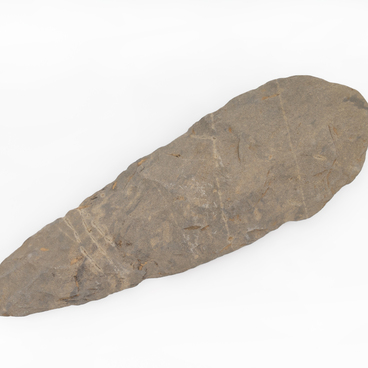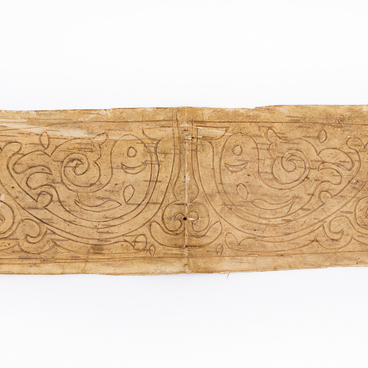The pommel of the mace presented in the exhibition was made about 6000 years ago in the Amur River basin from a boulder of coarse-grained sandstone. A through hole was made in the center. The pommel has a relatively small size, but initially it might have been larger.
Studies of archaeological finds have made it possible to determine that the first such tools appeared in the Stone Age. Then maces were made from a strong stick and a cobblestone of different stone rocks attached to its end, which the owner chiseled, knapped and ground.
In the Bronze Age, the cobblestone was replaced with a metal top, which was most often cast in the shape of a ball. In the Middle Ages, these weapons were popular in the Middle East, as well as in India. By this time, pointed spikes had appeared on the maces, against which any armor was powerless.
In Russia, such maces came into use in the 11th century. The empty space inside the hollow top was filled with pebbles and balls, which increased the impact force. Maces appeared in Volga Bulgaria at the same time as in Russia, but they became most widespread in the 12th–13th centuries.
Such weapons were used by both noble and ordinary warriors. The length of the mace reached 80 centimeters, and the weight of the metal pommel averaged 300 grams. The weapon was used to strike the enemy in any direction, which favorably distinguished it from the ax. At one time, the mace was used by both infantry and cavalry, the difference being that the weapons for horsemen were larger and heavier.
However, the mace, presented in the Komsomolsk-on-Amur Museum of Local Lore, is not a weapon, but a device for stunning large fish in local rivers and lakes. The population living in the Amur region mainly ate fish, as there were a lot of them in the local reservoirs. That is why it was caught using such a primitive method.
The archaeological
collection of the Komsomolsk-on-Amur Museum of Local Lore includes a variety of
objects: parts of clay vessels from different eras, stone tools and stone
weapons. Many exhibits were discovered during the exploration at the cape
“Second Sands” three kilometers below the village of Nizhnyaya Tambovka. The
objects were found by the Amur expedition in 1989 under the leadership of Zoya
Stepanovna Lapshina.





